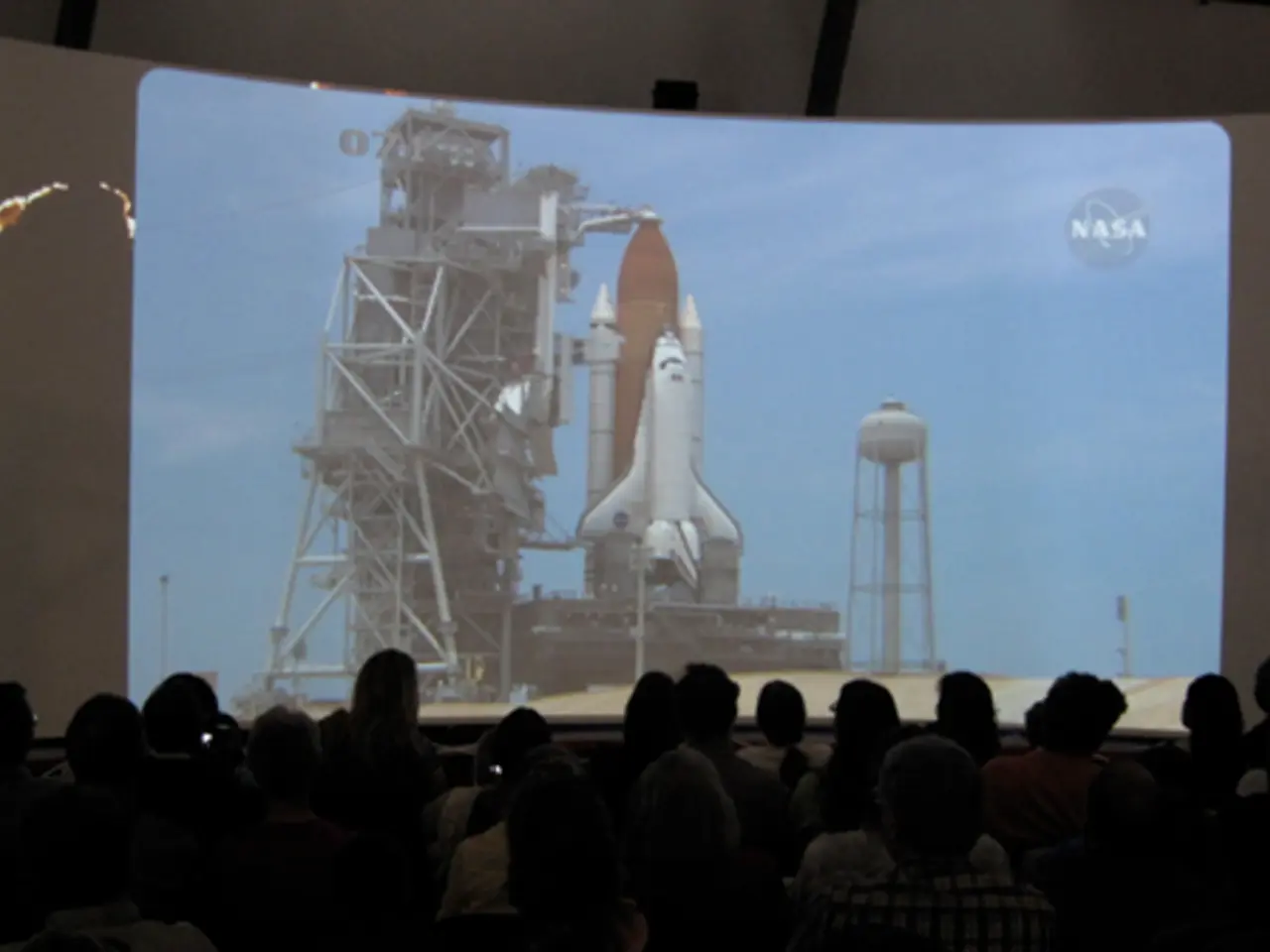Rockety and Propulsion Terminology Explained: Delta-v Fundamentals and Comprehensive Overview
Space exploration missions require meticulous planning and precise calculations to ensure their success. One of the crucial concepts in this field is the delta-v budget, a term central to mission design and rocketry.
In simple terms, delta-v (Δv) refers to the total amount of velocity change required for a spacecraft to reach its destination. The delta-v budget, therefore, is the total amount of delta-v that a spacecraft must have to successfully complete its mission.
The formula for calculating delta-v budget is Δv = Ve * ln(Mi/Mf), where Ve is the effective exhaust velocity, Mi is the initial mass, and Mf is the final mass. This formula takes into account the velocity at which the spacecraft's propulsion system expels gas (Ve), the mass of the spacecraft after its fuel has been expended (Mf), and the initial mass, which includes the mass of the spacecraft and its fuel (Mi).
Gravitational forces of celestial bodies can impact the delta-v budget, as spacecraft must overcome these forces to reach their destinations. For instance, the New Horizons mission to the distant dwarf planet Pluto required a significant delta-v budget to overcome the gravitational forces of the Sun and other celestial bodies.
Understanding the factors that affect the delta-v budget is essential for the success of space exploration endeavors. Advanced simulation tools, such as those using high-fidelity astrodynamics libraries, support the accurate calculation and validation of delta-v budgets in mission planning. This precision ensures reliable spacecraft dynamics modeling for proximity operations and orbital transfers.
Real-life examples of delta-v budget calculation and its impact on mission planning are central to major space exploration missions such as the Apollo program (Saturn V launches) and robotic missions like Cassini–Huygens.
The Saturn V launch vehicle, used for human Moon exploration under the Apollo program, relied heavily on precise delta-v budgeting to ensure that the spacecraft had enough propulsion to reach the Moon, enter lunar orbit, and return safely to Earth. Efficient allocation of delta-v influenced launcher design and fuel requirements, impacting mission cost and complexity.
The Cassini–Huygens mission to Saturn involved detailed delta-v budgeting for complex orbital maneuvers including the multi-year cruise, Saturn orbit insertion, and deployment of the Huygens lander to Titan. These maneuvers required careful planning to balance fuel mass and payload, driving launch vehicle selection and mission duration. The mission cost (approximately $3.26 billion) was influenced by propulsion and delta-v requirements for orbit adjustments and entry into Saturn’s system.
New propulsion technologies under development, such as nuclear fusion drives, aim to provide larger delta-v budgets, enabling faster and more distant missions (e.g., proposed missions to Sedna). These expansions in delta-v capacity could drastically reduce travel time and fuel constraints, revolutionizing mission planning and feasibility for deep-space exploration.
The impact of delta-v budget calculation on mission planning is far-reaching. Here's a summary of its effects:
- Launch Vehicle Design: Determines the size and power needed to achieve the mission's delta-v.
- Fuel Mass and Payload: Fuel demands grow exponentially with delta-v (rocket equation), limiting the payload mass available for scientific instruments or habitat systems.
- Mission Duration: Higher delta-v can mean shorter trip times or more complex maneuvers.
- Safety and Reliability: Sufficient delta-v margins are critical for contingency maneuvers and aborts.
- Cost: More delta-v means more fuel, bigger launch vehicles, and higher costs.
- Crew Exposure: Missions with efficient delta-v use can reduce crew exposure to radiation by reducing transit time.
In conclusion, delta-v budgeting is a cornerstone of mission design that affects spacecraft architecture, mission cost, duration, and success probability. New propulsion technologies promise to expand delta-v capabilities, enabling more ambitious missions with shorter travel times. As we continue to push the boundaries of space exploration, the importance of delta-v budgeting will only grow.
- The delta-v budget, a crucial concept in space exploration, is a term central to mission design and rocketry, as it refers to the total amount of velocity change required for a spacecraft to reach its destination.
- Understanding the factors that affect the delta-v budget is essential for the success of space exploration endeavors, given that it directly impacts spacecraft architecture, mission cost, duration, and success probability.




